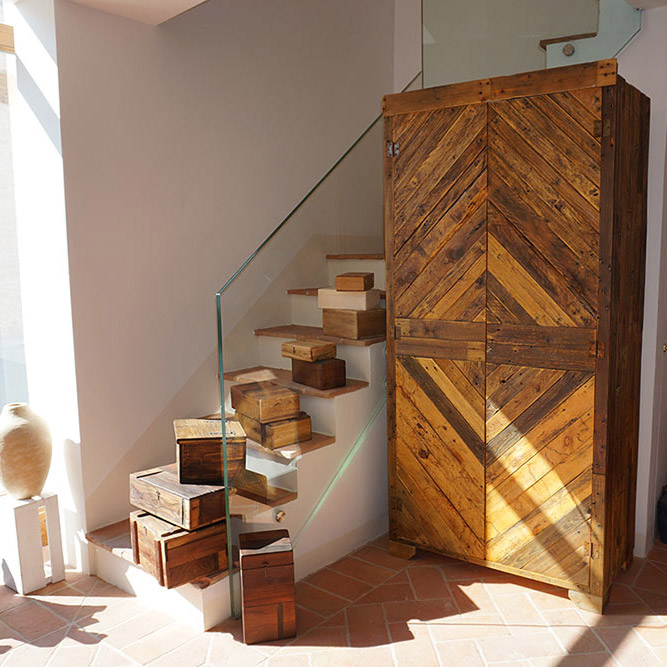Word of Mouth: Bolgheri, Tuscany
Traversing all the splendor of the lesser-known Italian wine region

Barolo and Montepulciano oftentimes steal the spotlight when it comes to iconic Italian wine towns, but the tiny, castle-topped home to one of the original Super Tuscans (red blends made in the region)—Bolgheri—is slowly emerging as a favorite, where visitors cozy up in villas along the coast. Before the 1980s, the region boasted one sole vineyard: Sassicaia, known for its Bordeaux-inspired, terroir-heavy reds grown in rocky vineyards. Today, there are 55 wine estates. One of those estates is the glorious Tenuta Sette Cieli (or “Estate of Seven Skies”), a 1,300-foot-high hilltop wine estate that feels as if it’s suspended over the Tyrrhenian Sea. Before the pandemic, we spent a weekend driving around with Ambrogio Cremona Ratti, owner and brand ambassador of Tenuta Sette Cieli, eating, drinking and exploring the lush region.
As the Bolgheri DOC (Denominazione di Origine Controllata) is fresh off celebrating its 25th anniversary, a slew of new tasting rooms and restaurants have entered into the scene, making the 1.5-hour drive from Florence to the coastal town even more appealing—travel restrictions and safety precautions allowing, of course.
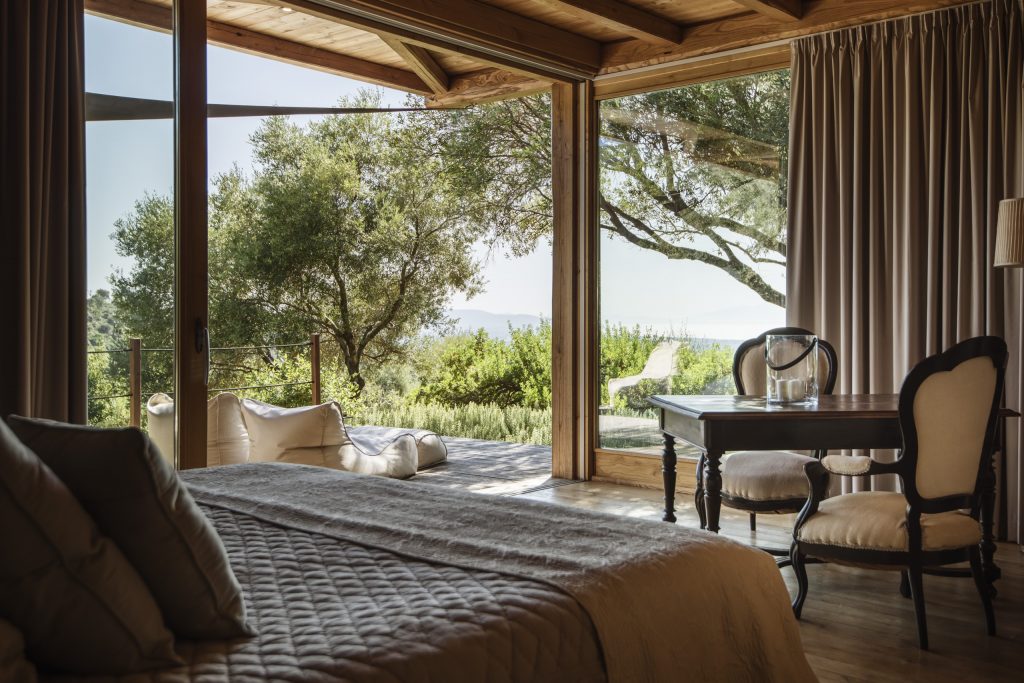
Poggio Ai Santi
For a true Tuscan experience, the charming boutique hotel Poggio ai Santi—once a family farmhouse—is about as close to a private villa stay as you can get. A 20-minute drive from Bolgheri’s vineyards, the 12-suite hotel offers unparalleled views over the islands of Elba and Corsica, as well as the ancient Etruscan city of Populonia (best seen from the pool or rose garden). The sprawling estate spans 80 acres, with plenty of terraces for lounging with a good book and a freshly made craft cocktail from the dedicated aperitivo bar. Rooms are rustic and charming, with a touch of Italian country style. The airy, 807-square-foot villa suites stand out for their stunning south-facing views.
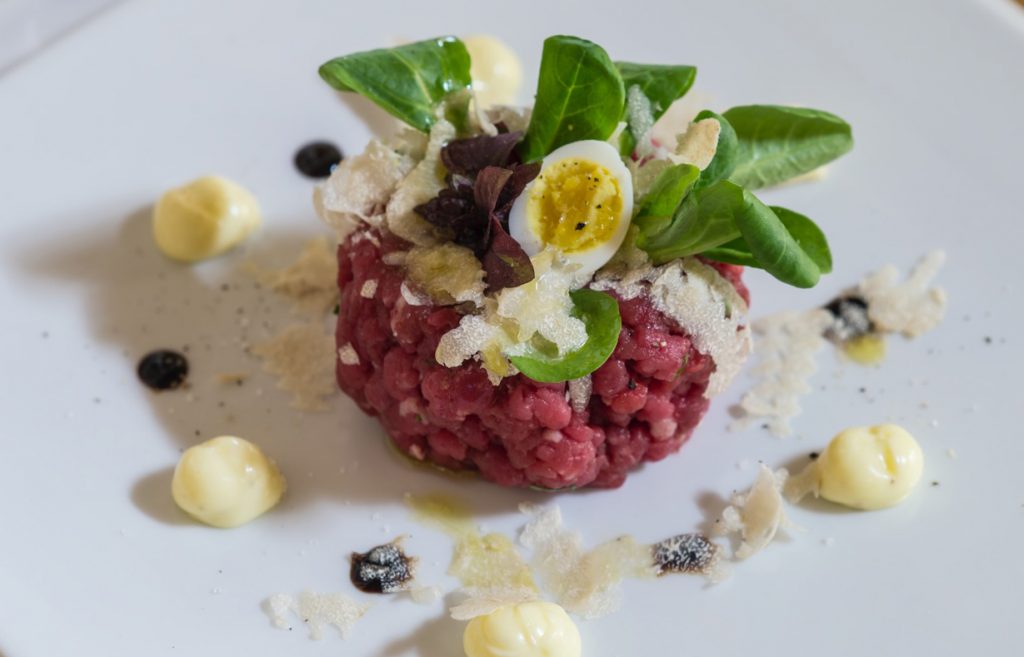
Osterio San Guido
Tenuta San Guido is the birthplace of Sassicaia. This is where Mario Incisa della Rocchetta planted Bolgheri’s first vineyards in the seaside town of Castiglioncello in 1942. The estate later became public and began welcoming visitors to its farmhouse-style eatery, Osterio San Guido. Homemade pasta and traditional Tuscan dishes crafted from ingredients sourced in the onsite garden fill the alluring menu. Wine is half the reason to visit, so be sure to allow the knowledgable staff to guide you through a tasting, paired with cured meats and cheeses.
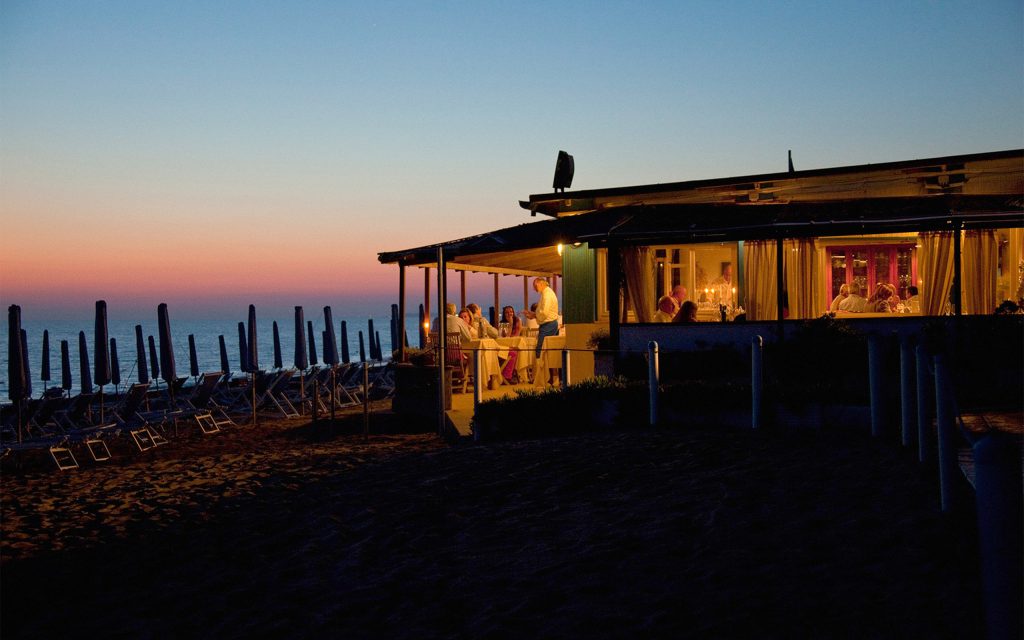
La Pineta
The late fisherman and chef Luciano Zazzeri took over La Pineta in the ’80s, reinventing his family’s casual seaside eatery and earning a coveted Michelin star in the process. Simply referred to as “la baracca” (or “the shack”) by locals, La Pineta became the go-to seafood spot in Marina di Bibbona for its food, wine and magical location. The restaurant is so close to the sea, it’s practically hovering over the water (parking is right on the pine forest-lined sand). Make your way through a tasting menu of marinated mackerel with ricotta and caramel, baked fish with rosemary and tomatoes, and spaghettini with peppered mussels—accompanied by a beautiful, bold red.
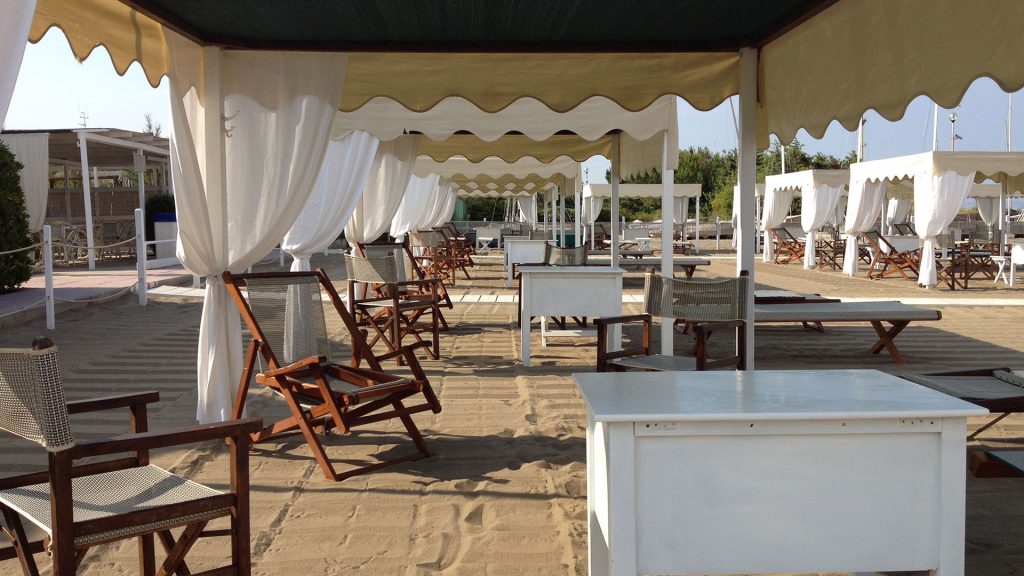
La Tana del Pirata
Surrounded by nothing but wild coastline, La Tana del Pirata has become an insider favorite for its discrete locale and private beach complete with ’60s-style cabanas and raffia umbrellas. Start on the restaurant’s outdoor terrace with a lunch of fresh fish and seafood platters before snoozing in one of the sun-lounges on the sand or with a poolside massage at the spa area, located just steps from the sea.
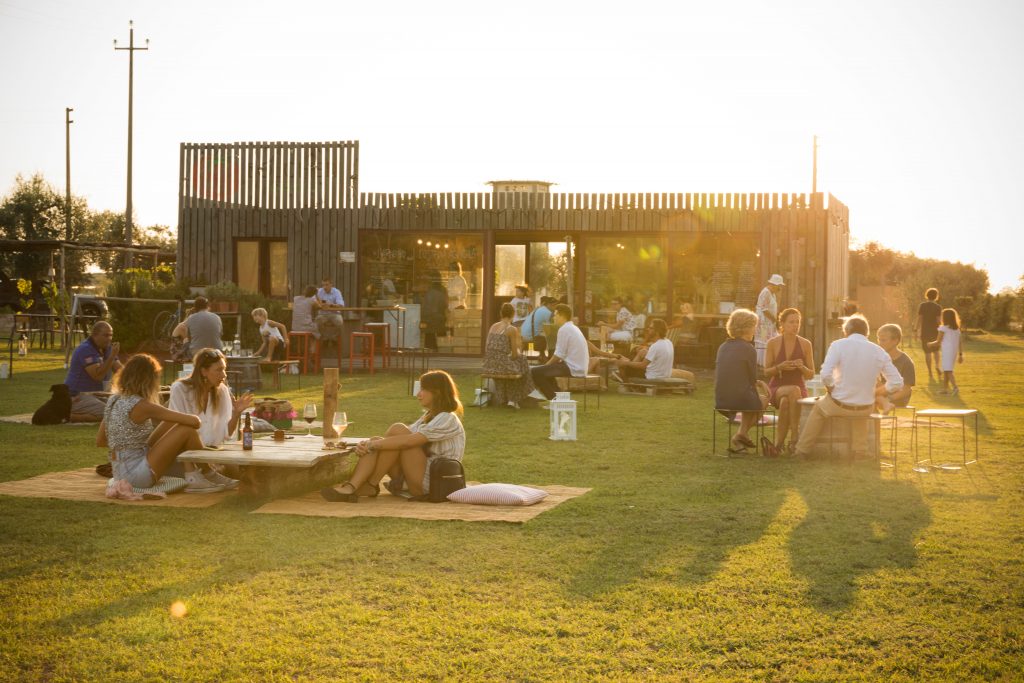
Bolgheri Green
Three years ago, athlete and vegan cookbook author Fabrizio Bartoli and his partner, Martina Morelli, opened a shop with light bites made using ingredients grown on their 20-acre organic farm. Over the past year, the concept transformed from al fresco aperitivo on Persian rugs under the stars into a full-service vegetarian restaurant. Located on the famous wine road that connects Castagneto Carducci to Bolgheri, open-air Bolgheri Green is a grassy stretch strewn with picnic tables and wooden lawn furniture. The duo draw inspiration from travel for their fresh, seasonal dishes like cast-iron grilled watermelon with feta and baba ghanoush with smoked eggplant cream. Produce is plucked from the garden daily, and everything is homemade—from the olive oil to the pita baked on their outdoor plancha.
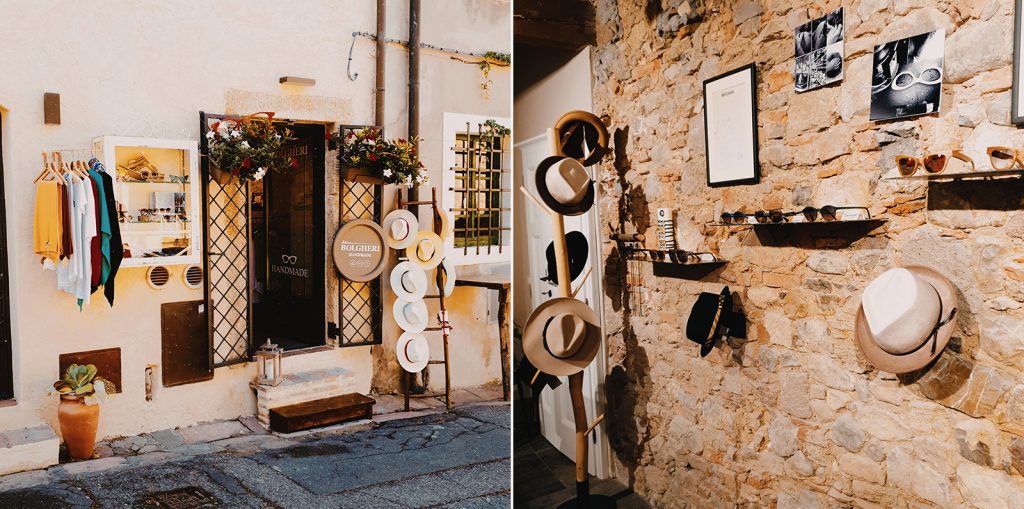
Bolgheri Eyeswear
Make the scenic drive along the Viale dei Cipressi, which dead-ends in front of Bolgheri’s red-brick castle—the town’s unofficial symbol. Stroll through the medieval winding streets browsing souvenir shops before diving into Bolgheri Eyeswear. The three-year-old boutique was born from optician Matteo Proto’s custom eyewear line, a collection of handmade glasses and sunglasses with styles inspired by the region. Now the store has expanded to sell a mix of hats, apparel and leather products that proudly bear the “Made in Bolgheri” label.
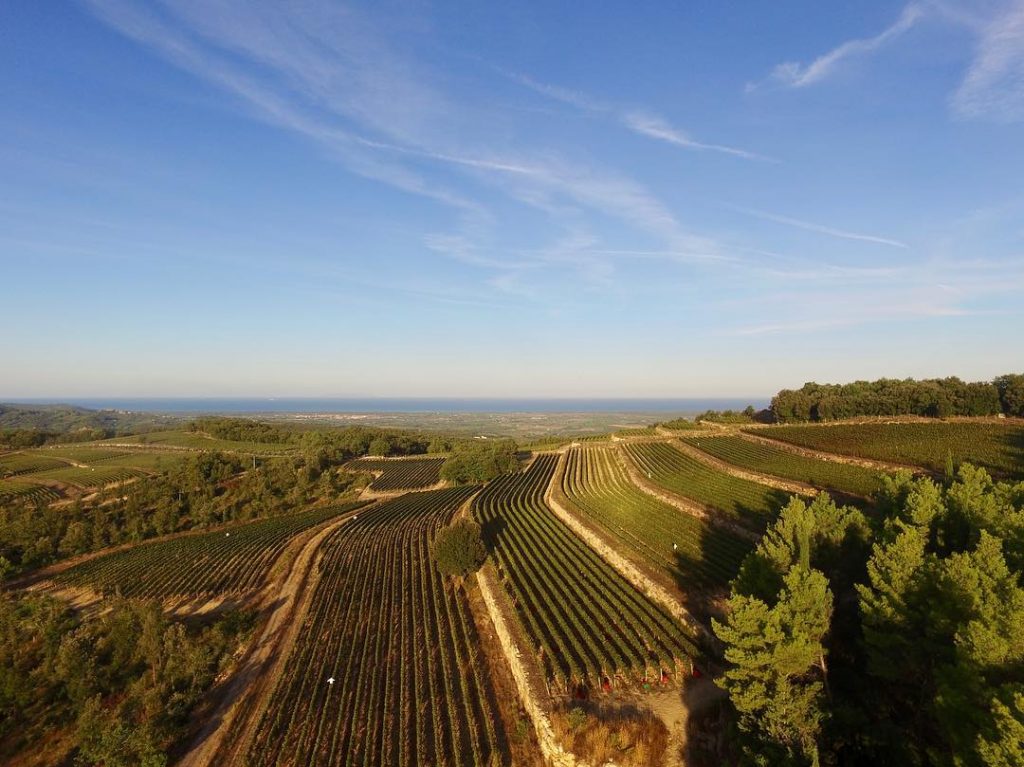
Tenuta Sette Cieli
At dusk on a clear day at Tenuta Sette Cieli, the sea and sky become indistinguishable and form an even backdrop of indigo blue—a view that inspired the name for their inky, plum-hued Indaco (Italian for indigo) wine. Erika Ratti—the mother of our aforementioned host, Ambrogio Cremona Ratti—purchased the estate in 1994 and six years later, the first vineyards were planted. Now the winery is home to 17 acres of cabernet sauvignon, cabernet franc, merlot and malbec, with each variety separated by terraces crafted of stone dug up from beneath the estate. The vineyards are organic and farmed manually, which CEO and winemaker, Elena Pozzolini, compares to homeopathic medicine; instead of a quick cure through pesticides, she prefers the natural route for long-term gain. Sitting at the highest point of the estate with Pozzolini and Ratti, we learn about the importance of the balance of the vines and the balance in the glass, and the joy of profiles shifting slightly from one vintage to the next. “It’s not like we’re making T-shirts,” Pozzolini says. “Wine shouldn’t always be the same.”
Hero image courtesy of Poggio Al Santi
